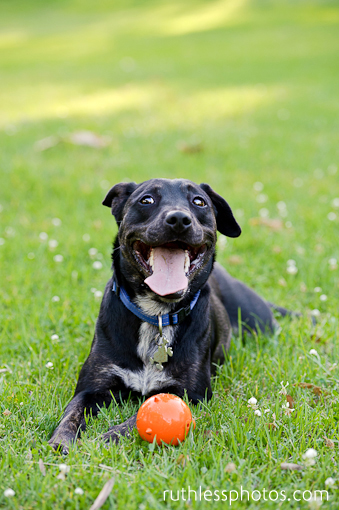General Training Bits (Dunbar)
This post is part of the series in response to Dunbar’s 2012 Australian seminars. See index.
There are a lot of little training bits that Dunbar mentioned that don’t really go in any other post… Here they are for you:
- In the ‘big wide world’, dog owners should always carry treats for classical conditioning. Always. For the life of the dog. You can perhaps relax a bit after the dog is 3 years old, but it certainly should go beyond 3-4 months of ‘puppyhood’.
- We should aim to remove food lures (but this is not the same as classical conditioning, where we need food all the time).
- A dog that will play fetch or tug are more reliable off lead, as they often seek people to engage in play.
- Dunbar stated that he did not support using behaviour-ancedecent-consequence (that is, BAC) in training as he finds it ineffective. That is, as a dog sits, you say “sit”, and hope they associate the word with the behaviour. (In my personal experience, I have captured behaviours using this method and put them on cue in very few repetitions… I find it quite effective.)
- Sit and lie down are great solutions to almost any problem – as long as you’re still there.
- Fixes for humping:
- Tell the dog to do something else (e.g. sit, drop, fetch).
- Cue the dog to “off” and withdraw from the environment if the dog continues to hump.
- Along with ‘put your problem on cue’, put humping on cue! (Jean Donaldson did just that.)
- If your dog really likes humping, give your dog a ‘humpy cushion’ to reward them for good behaviour.
- For teaching a dog to ‘take stuff’, then associate the cue with them taking good treats from your hand. The dog will form a habit, and will automatically take less-good-stuff when presented.
- Tugging can be vamped as a secondary reinforcer.
- Punishment is insufficient. Punishes inhibits behaviour only. Training is not just stopping undesirable behaviours, but also quickly getting back on track into more appropriate behaviours.
- “Sorry behaviour” exists. Dunbar used the example of young horses who, when kicked out from a herd for a short time, return in an apologetic way. This can be a way to strengthen relationships.
- Dunbar described ‘back chaining’ as “moving to a position of strength”, and used (people) learning poems as an example. That is, if a person was to learn the last bit of a poem first, and work their way back, they’re likely to learn it quicker.
- Dunbar advocated teaching dogs that a gruff or loud tone of voice means “better treats”, which helps to protect against dogs running away or acting unfavourably in situations when their owner’s voice becomes tense.
- Suggested putting running fast on cue, and using it in recalls and dog sports (like flyball).
- As a safety behaviour, teaching dogs “not my daddy” when people go to open their crate: anti-theft training.
- Training is:
- Changing the frequency of behaviours, and
- Putting behaviours or absence of behaviours on cue.
- Dunbar advocated using a stern voice (as a punisher) to teach dog boundaries – particularly, not to go out the front door and not to go out the front gate.
- Dunbar suggested that we are ‘hung up’ on etiology (work out why the dog is doing what it’s doing) instead of actually working to fix the program. In Dunbar’s words, “Just get on with it and train the dog!”
- Mental exercise tires a dog quicker than physical exercise. Nosework is the ultimate in mental exercise.
- For dogs that greet people in a problematic way, they should be taught ‘shush’ and ‘sit’, and people coming into the house should be schooled to cue these behaviours.
- Furthermore, these dogs can be taught that people arriving is a cue for quiet.
- In Dunbar’s opinion, ignoring and back turning doesn’t stop jumping up – but saying “sit” often does.
- Dunbar’s summary (para-phrased) of dog training ‘these days’: There is a lot more food, and a lot more classical conditioning. Dogs are getting friendly and safer around people. But, dog-dog aggression is increasing because of lack of off leash training. Lots of people who begin clicker and luring training keep these tools forever.
- Though lure-reward training or clicker training is a good place to start training behaviours, these behaviours need to be phased out.
- He said, “If we phased out our reward tools, we’d blow punishment out of the water.”
- As you move away from a dog, their comprehension of the cue decreases.
- Flooding is only okay when the rewards are justifiable. Puppies can be flooded. Dogs that are human aggressive should not be flooded.
- Rewards drive behaviour!
- He likes the simplistic law of effect from Thorndike’s: Rewards increase frequency of behaviour, punishments decrease frequency. Really, Dunbar argues, this is all there is to training.




